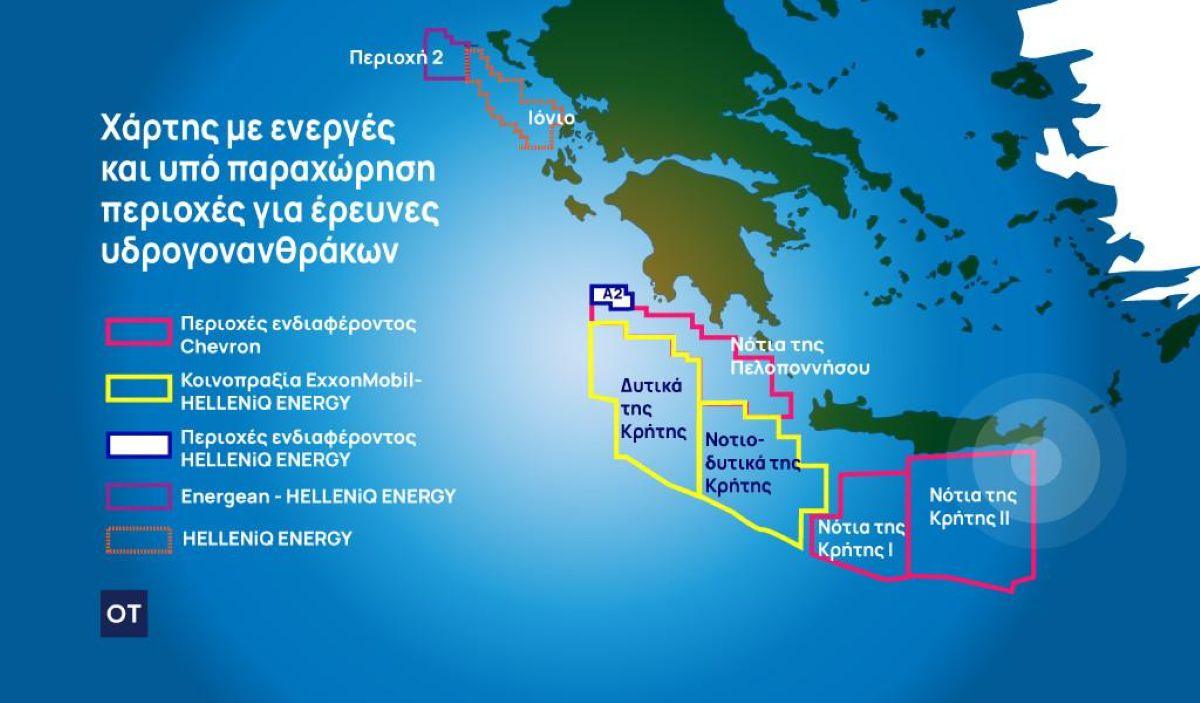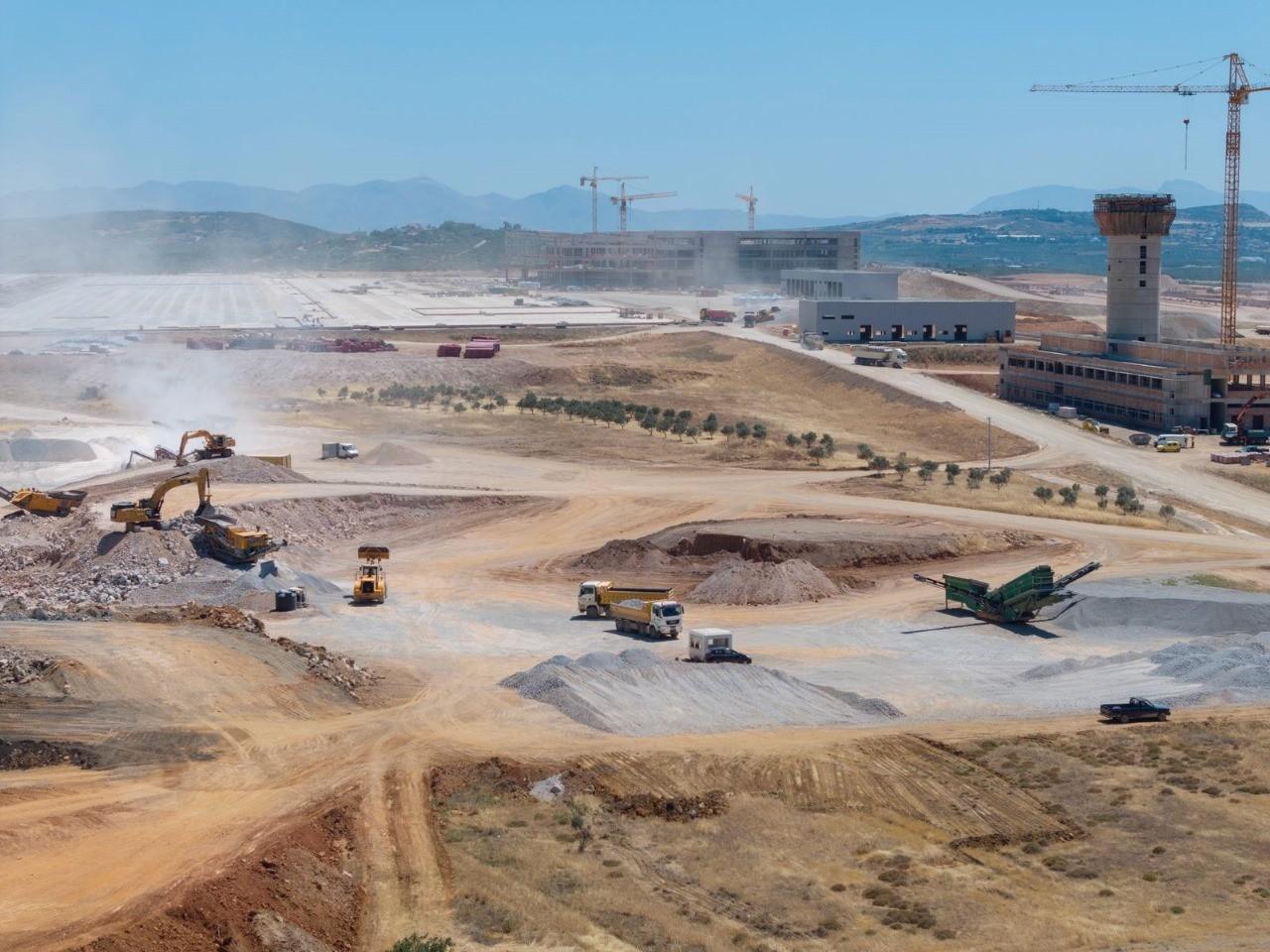The architectural study for the renovation of Vasilissis Olga Avenue was approved yesterday by the Central Council of Architecture of the Ministry of Environment and Energy. The project is the “core” of the plan to unify the archaeological sites of Athens, which is expected to be completed with the implementation of the new Great Walk brought to the fore by the Municipality of Athens, in mid-2020, mediating the pandemic and the need of citizens for free places.
This project has a long history, as it was included in the old program of unification of the archaeological sites of the capital, which was never completed. In 1983, it was included by the then Ministry of Environment, Physical Planning and Public Works in the Athens Master Plan, which was finally approved in 1985 (under the ministry of Antonis Tritsis). Two years later, in 1987, the Ministry of Culture completed the strategic plan (masterplan study) which demarcated the intervention area.
Various studies followed, until in 1995 the Society for the Unification of Archaeological Sites of Athens (EAXA) was founded, which marked the beginning of the implementation of the ambitious plan of drastic intervention, on a large scale, in the public space of the city center. At that time, the Great Promenade included the Shopping Center, the areas of Psyrri, Metaxourgio, Plato’s Academy, Thissio to Kerameikos and Gazi, Plaka, Apostolou Pavlou and Dionysiou Areopagitou, Vasilissis Olgas, Ardittos, and Mets . Of the few projects that were finally completed, the most emblematic is the large pedestrian street of Apostolou Pavlou and Dionysiou Areopagitou.
In 2010, the “Athens-Attica 2014” plan of the then PASOK Minister Tina Birbilis included the completion of the “Great Walk” from the Olympion to Kallimarmaro, as well as the pedestrian walk of the University, which was institutionally planned since the 1985 Regulatory. In 2013 the issue resumed when the establishment of an Urban Development Fund for Athens was announced by the then Minister of Environment Evangelos Livieratos and the Mayor of Athens Giorgos Kaminis.
And later, in 2017 during the days of SYRIZA, came the “New Athens” program presented by former Prime Minister Alexis Tsipras, followed by the establishment of the company “Regeneration SA”, which would coordinate a wide program of projects to upgrade the capital, based on mature studies of recent decades.
The new study
The special architectural study approved yesterday by KESA, was prepared following two previous studies. The first, which had as its object the overall promotion of the archeological site of Olympia and the renovation of Vasilissis Olgas Avenue, was prepared between 1997 and 2001. The second, was prepared like the first on behalf of EAXA, between the years 2011 and 2014 and had as its exclusive object the renovation of Vasilissis Olgas Avenue. The first was completed and received but never constructed, while the second was completed but not received with a final acceptance act, due to the dissolution of EAXA, thanks to the country falling under the memoranda.
Today’s study concerns the transformation of Vasilissis Olgas Avenue into a pedestrian street, in order to form a wide common area that will unite the archeological site of Olympia with the Zappeion and the National Garden and will complete the archeological walk from Panathios to Kerataikos. The boundary of the study extends from the junction of Vasilissis Olgas Avenue with Vassileos Konstantinou Avenue and Ardittou Avenue to its junction with Amalias Avenue, including the area surrounding Hadrian’s Gate. Emergency vehicles, catering vehicles, special vehicles and public transport vehicles are excluded from the traffic ban.
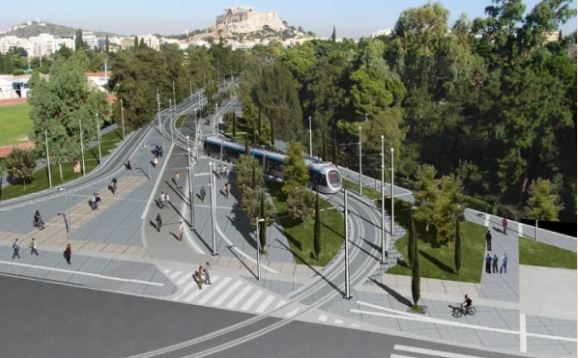
In particular, the main differences of the new Architectural Study, in relation to the previous ones are the following:
• The configuration around the statue of Alexander the Great is changed so that it can be integrated – as much as possible – in the rest of the configuration.
• The configuration of the entrance of the Archaeological Site changes, taking into account the newer constructions. The space is configured so that a taxi can disembark or embark the elderly or disabled. The taxi should follow the route of the ascending branch of Syggrou Avenue and then the Hadrian’s Gate, with a right turn to reach the entrance of the Archaeological Site through the descent line of the tram.
• The frames of the tram rails are repaired after their weak parts are removed.
• The bus line to Pagrati will depart from Vasilissis Olgas Avenue on its descent and will follow the trolleybus route, with a tour of the Olympion through Syggrou Avenue, Athanassiou Diakou Street and Ardittou and Vassileos Konstantinou Avenues.
• The entrance of Private Car Passengers to the Tennis Club will not be from Vassileos Konstantinou Avenue with a cross passage over the two branches of the tram, but from the descent branch of the tram, following the same route described for the vehicles that have as a destination the entrance of the Archaeological Site.
• A bus and trolley stop is added opposite the entrance of the Archaeological Site, with a shelter for waiting passengers.
The parking lot in front of “Aigli” will be maintained with its current operation and with access from Vassileos Konstantinou Avenue and the lower part of the trolley lane. The continuation of the path of vehicles beyond trolleys and buses will be prohibited. The exit of the parked vehicles and the refueling vehicles will be done from the small alley located at the southeastern end of the Fokianos gym.
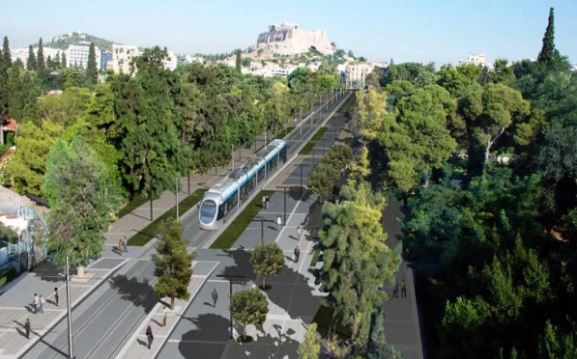
“Yes” to bikes, no bike lanes
Despite the provision for the future installation of a bicycle rental service on the pedestrian street of Vasilissis Olgas Avenue, the study proposes not to provide for a separate bicycle path. This is because, as the researchers explain, in this way the bicycles will be able to move in the middle of the pedestrians without developing high speeds, in contrast to what would happen in case of construction of a separate bicycle path. The same happens today on the pedestrian street of Dionysiou Areopagitos and Apostolos Pavlos.
In addition, the construction of a bike lane will add another treadmill to those already provided (two treadmill lanes and a trolley lane). For cyclists, the crosswalks on Amalia – Syggrou and Vassileos Konstantinou – Ardittou Avenues will be marked and an indication that the passage of a bicycle with pedestrian priority is allowed.
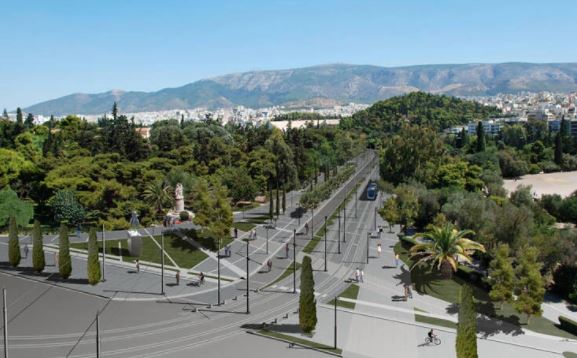











![Δασμοί: Οι εμπορικές συνομιλίες ΕΕ-ΗΠΑ για τους δασμούς στα αυτοκίνητα [γραφήματα]](https://www.ot.gr/wp-content/uploads/2025/07/tofas.jpg)
![Τεχνητή νοημοσύνη: Η ζήτηση ενέργειας αυξάνει τις εκπομπές CO2 [γράφημα]](https://www.ot.gr/wp-content/uploads/2025/02/data-center.jpg)
![Χρυσές λίρες: Πουλάνε μαζικά οι Έλληνες το εξάμηνο του 2025 [γράφημα]](https://www.ot.gr/wp-content/uploads/2025/07/photo_2025-07-04_13-01-06.jpg)






